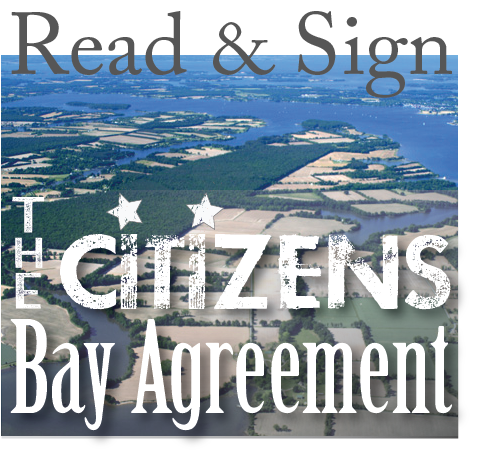Chesapeake Bay Action Plan
After decades of effort, the voluntary, collaborative approach to restoring the health and vitality of the Chesapeake Bay— the largest estuary in the United States—has not worked and, in fact, is failing.
A diverse group of 57 senior scientists and policymakers have joined forces to save the Bay. This is our plan.
Thoughts on the 2011 Maryland Legislative Session
Posted by Eric Michelsen.
Perhaps you’ve heard it said that in Chinese the character for “crisis” is the same as the one for “opportunity”. I know I have. A quick search of the internet, that great dasher of self-delusion, suggests that this assertion was probably wishful thinking guided by a poor translation. Nonetheless, I think there’s a great deal of merit to the idea of embracing turbulent times as a vehicle for positive change. And, there’s little question we’re living in turbulent times. 
Support Farmers, Not the Farm Bureau
(Posted by Michael R. Helfrich.)
Many of you have probably heard about the Farm Bureau suing to block the Chesapeake TMDL (Total Maximum Daily Load) and WIP (Watershed Implementation Plan) cleanup plans. This lobbying group has no understanding of what it means to live in community, where everyone’s actions affect everyone else. They are willing to destroy the Bay economy, supposedly to save agriculture around the Chesapeake Watershed. But why do they never go after the real problem?
Persistence, Patience and Bay Restoration
Posted by Walter Boynton.
Successful Bay restoration will need big and bold efforts. It may take years to see results.
The Bay of My Future
Posted by Fred Tutman
Being something of a science fiction fan, and admittedly a recovering “Trekkie” I am always intrigued by depictions in film and in literature of Utopian societies where humans have turned their attention away from sparring with one another and plundering the planet for cash and instead devote their lives to efforts to spreading peace, goodwill and humanitarian aid throughout the galaxy.
A. 27 years, 6 months, 11 days
Posted by Howard Ernst
Q. How long has it been since we missed the Clean Water Act deadline for restoring the nation’s rivers and streams?
Chesapeake Bay’s Future at Stake
Posted by Gerald Winegrad.
The recently filed plans by states on how they will meet the pollution diet mandated under the Clean Water Act fall well short of the necessary measures to restore the Bay. Missing are details about how they will fund the platitudes in the plans as well as specific regulatory measures that will be taken to reduce farm pollution and developed land pollution.
We Have a Plan, Now We Need Leadership
Posted by Erik Michelsen.
Late last year, when Maryland turned in its roadmap for cleaning up the Chesapeake to the federal government, many of us held out considerable hope that it would not only detail strategies for how we, collectively, are going to clean up our portion of the Bay’s pollutants, but also clearly articulate the ways that the state would finance this multi-billion dollar initiative.
Our New Year’s resolution: Looking after our own backyards
Posted by Bill Dennison.
The recently released Chesapeake Bay Foundation report provided a Bay-wide assessment of the status of Chesapeake Bay as a whole. While this high altitude view of Chesapeake Bay gauged against the John Smith Chesapeake Bay of the early 1600s is useful as a benchmark, it does not readily translate into local action. This is because of the immense scale of Chesapeake Bay, especially considering the scale of the Chesapeake watershed.
We are senior Chesapeake Bay scientists and policymakers from Maryland, Virginia and Pennsylvania who have concluded that after decades of effort, the voluntary, collaborative approach to restoring the health and vitality of the largest estuary in the United States has not worked and, in fact, is failing. Our group unanimously recommends that all states draining into the Chesapeake Bay adopt our 25 action items in their Watershed Implementation Plans (WIP) and implement them to improve the Bay’s water quality and to meet the requirements of the Clean Water Act.
Sign up for news & updates from Patuxent Riverkeeper
